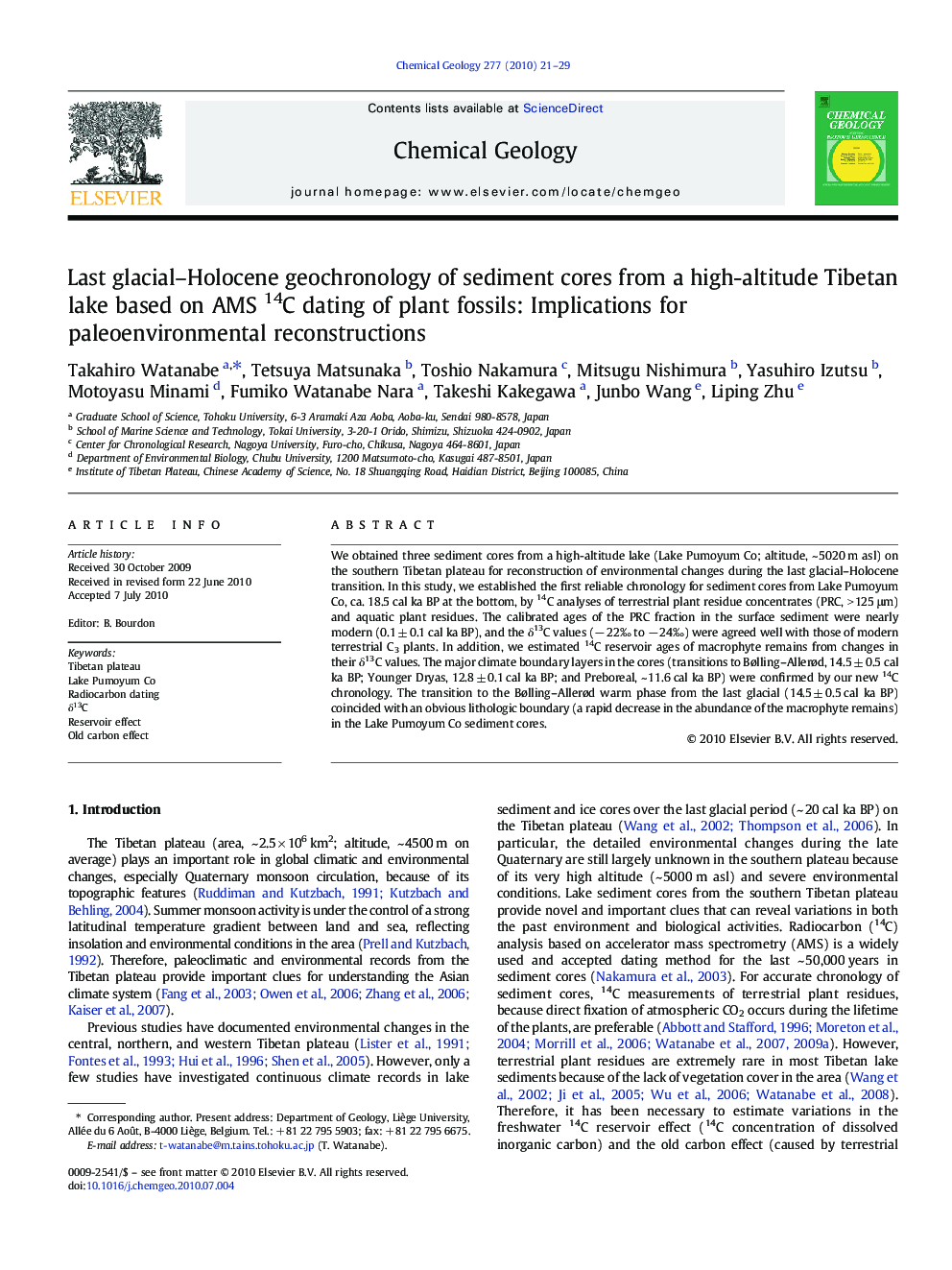| Article ID | Journal | Published Year | Pages | File Type |
|---|---|---|---|---|
| 4699860 | Chemical Geology | 2010 | 9 Pages |
We obtained three sediment cores from a high-altitude lake (Lake Pumoyum Co; altitude, ~ 5020 m asl) on the southern Tibetan plateau for reconstruction of environmental changes during the last glacial–Holocene transition. In this study, we established the first reliable chronology for sediment cores from Lake Pumoyum Co, ca. 18.5 cal ka BP at the bottom, by 14C analyses of terrestrial plant residue concentrates (PRC, > 125 μm) and aquatic plant residues. The calibrated ages of the PRC fraction in the surface sediment were nearly modern (0.1 ± 0.1 cal ka BP), and the δ13C values (− 22‰ to − 24‰) were agreed well with those of modern terrestrial C3 plants. In addition, we estimated 14C reservoir ages of macrophyte remains from changes in their δ13C values. The major climate boundary layers in the cores (transitions to Bølling–Allerød, 14.5 ± 0.5 cal ka BP; Younger Dryas, 12.8 ± 0.1 cal ka BP; and Preboreal, ~ 11.6 cal ka BP) were confirmed by our new 14C chronology. The transition to the Bølling–Allerød warm phase from the last glacial (14.5 ± 0.5 cal ka BP) coincided with an obvious lithologic boundary (a rapid decrease in the abundance of the macrophyte remains) in the Lake Pumoyum Co sediment cores.
Research highlights►14C chronology of sediment cores from Lake Pumoyum Co, southern Tibet, was presented. ►A positive LSR anomaly in the core, which may correspond to a 14C plateau during the Younger Dryas, was observed. ►14C reservoir ages of macrophyte remains were estimated by the changes in their δ13C values. ►The transition to the Bølling-Allerød warm phase from the last glacial coincided with an obvious lithologic boundary (a rapid decrease in the abundance of the macrophyte remains).
